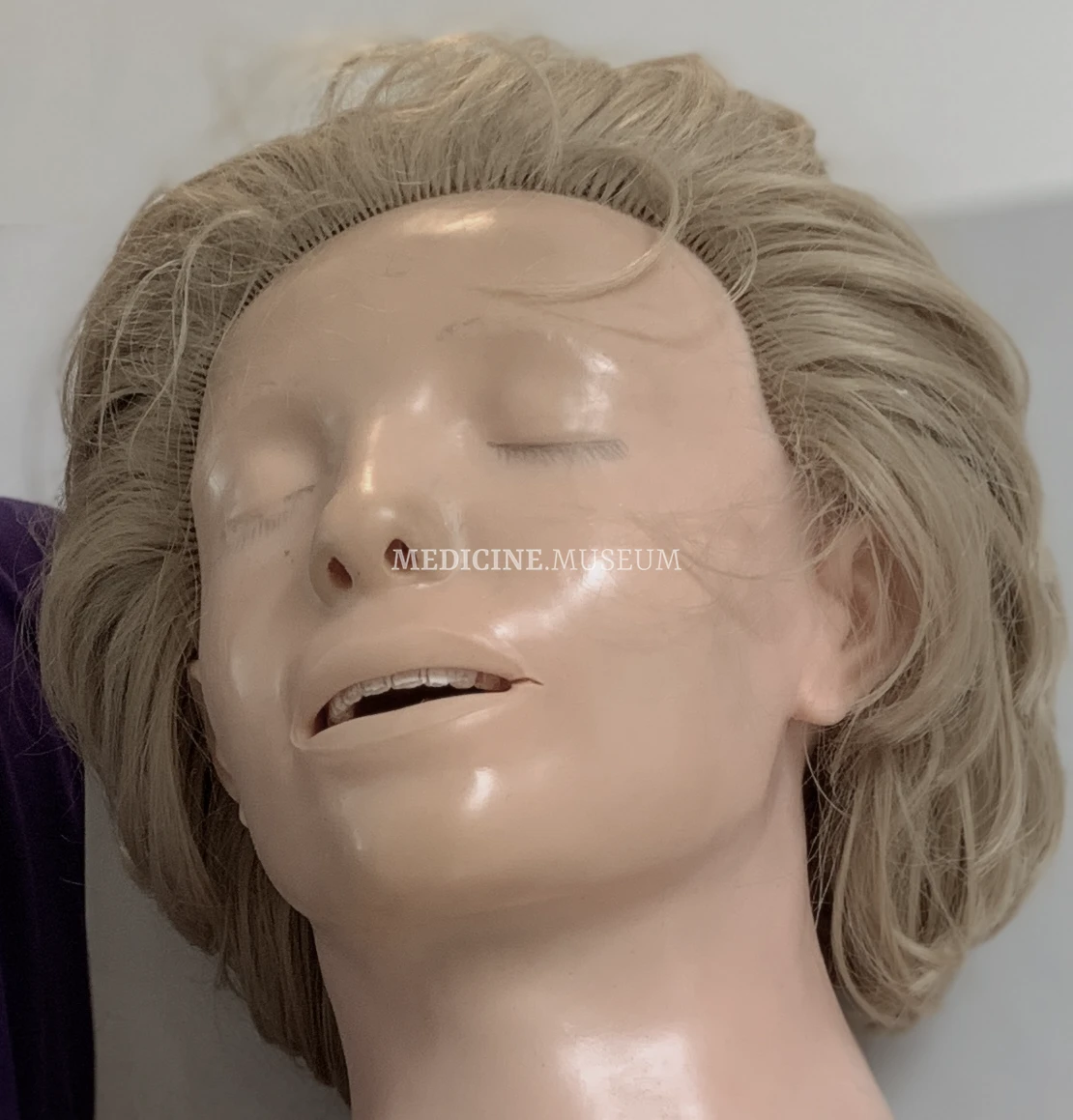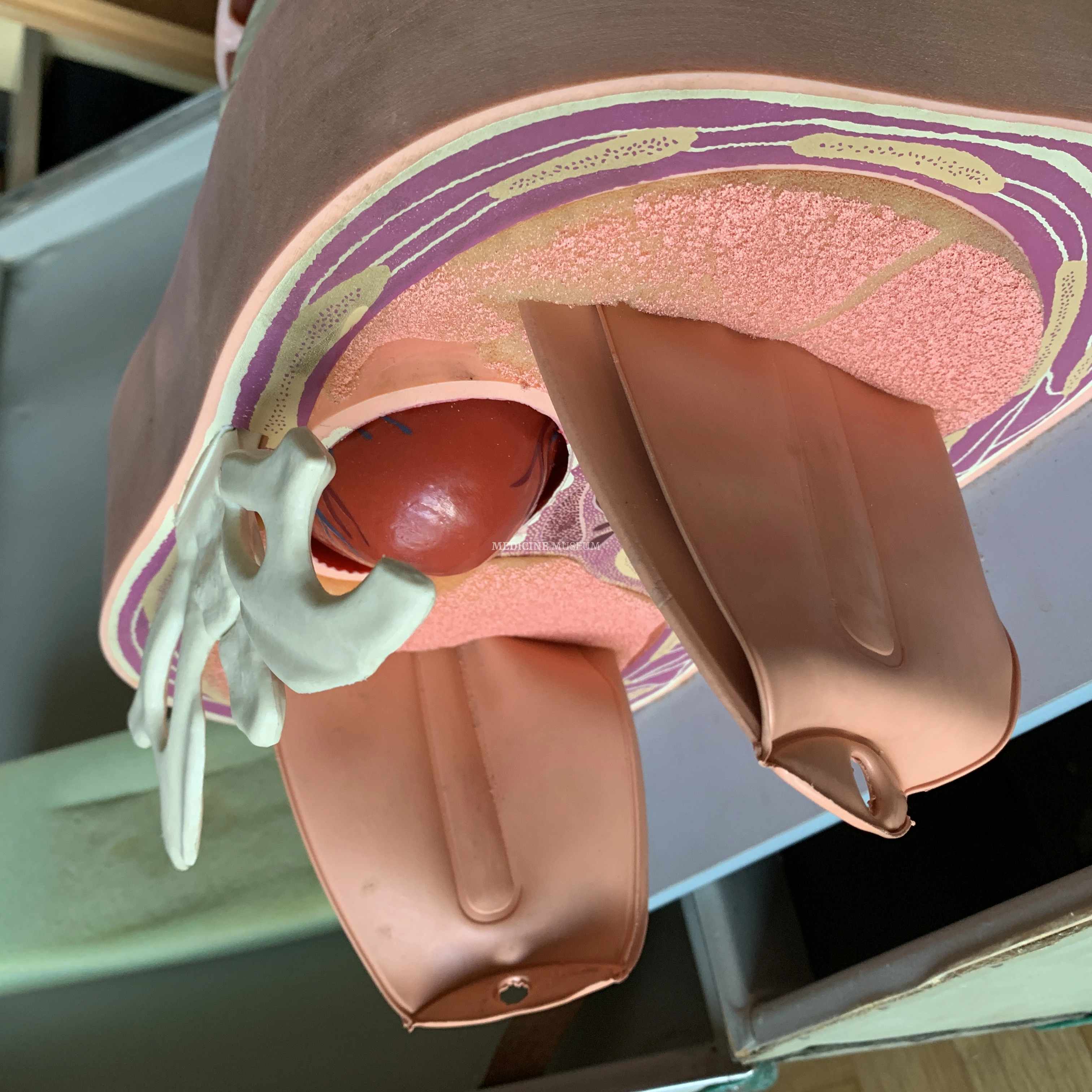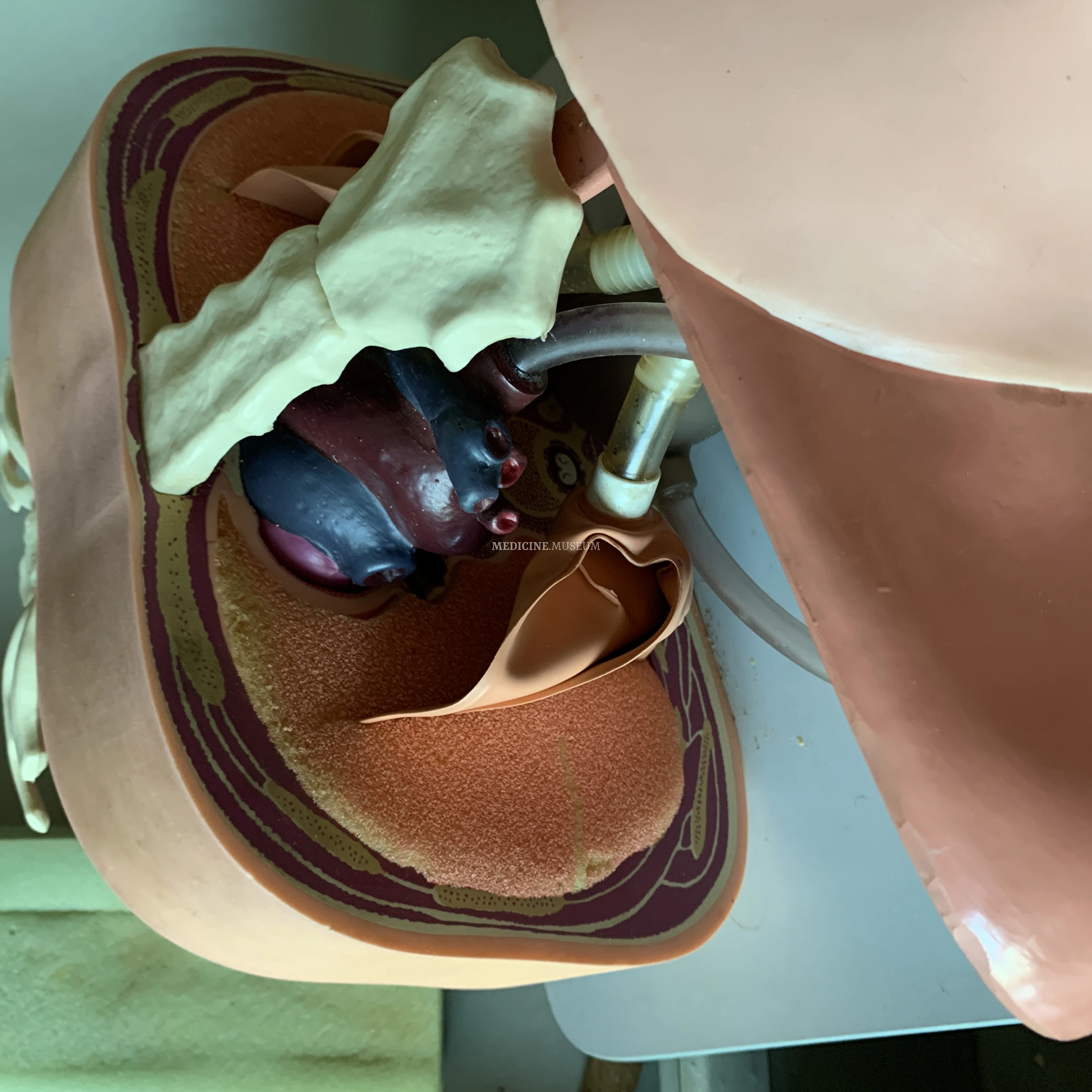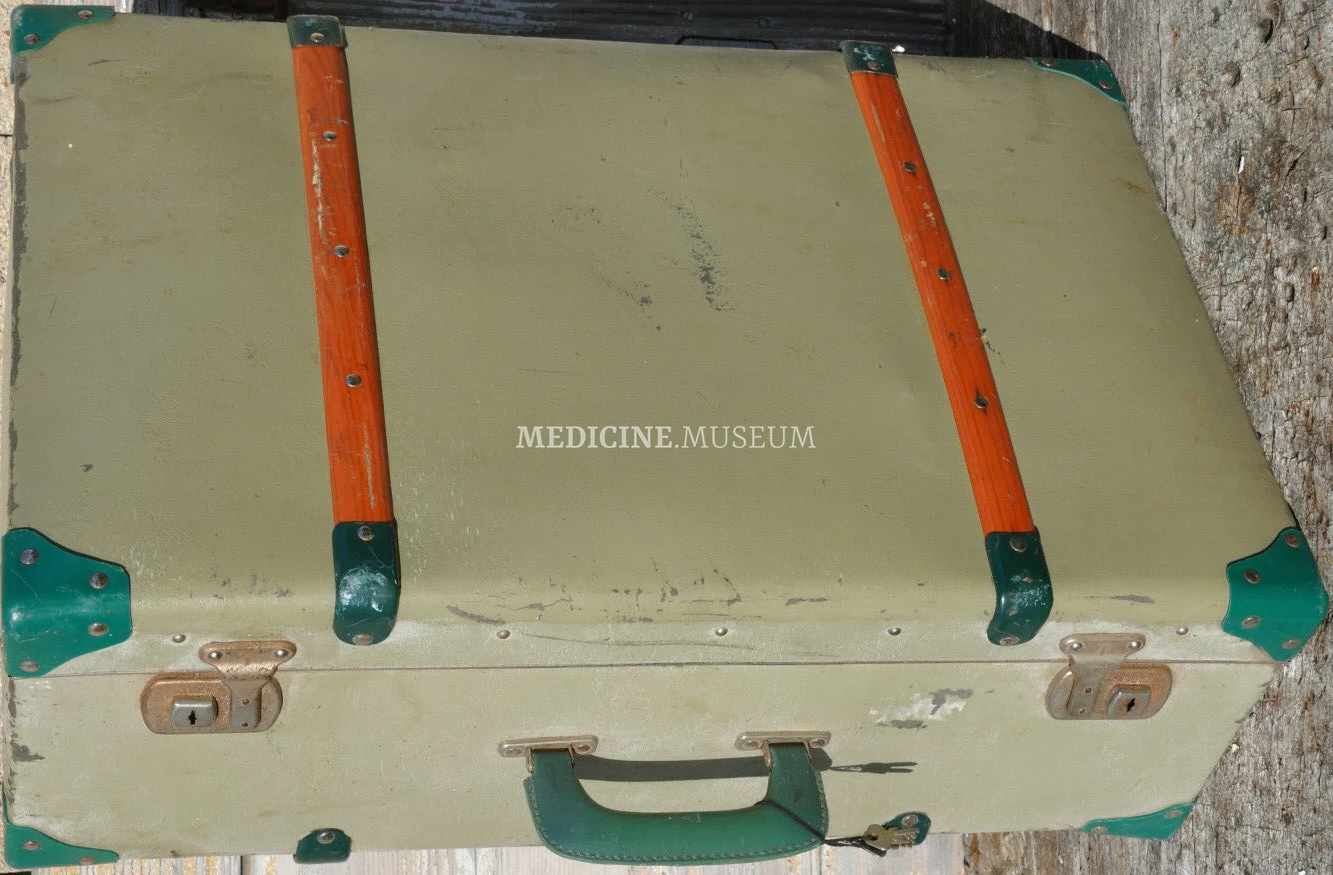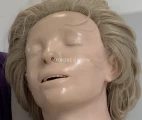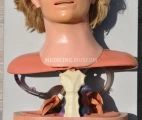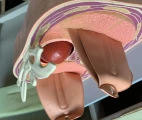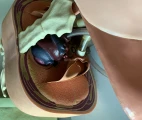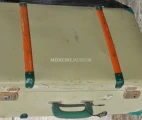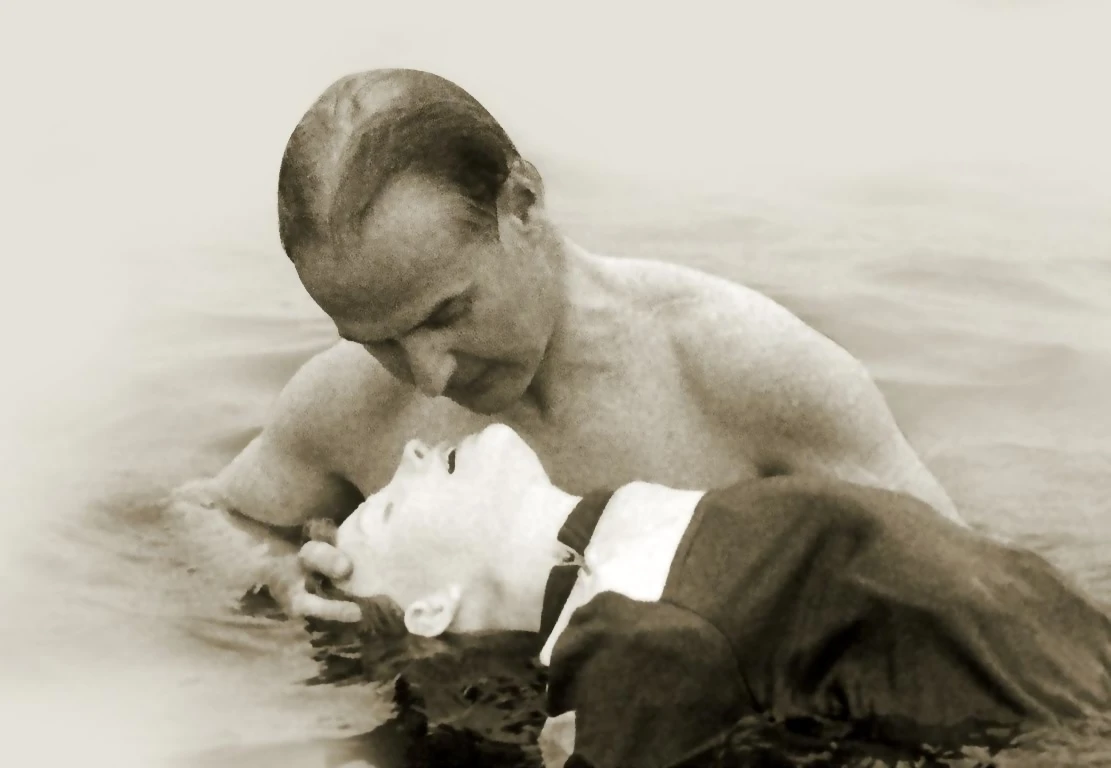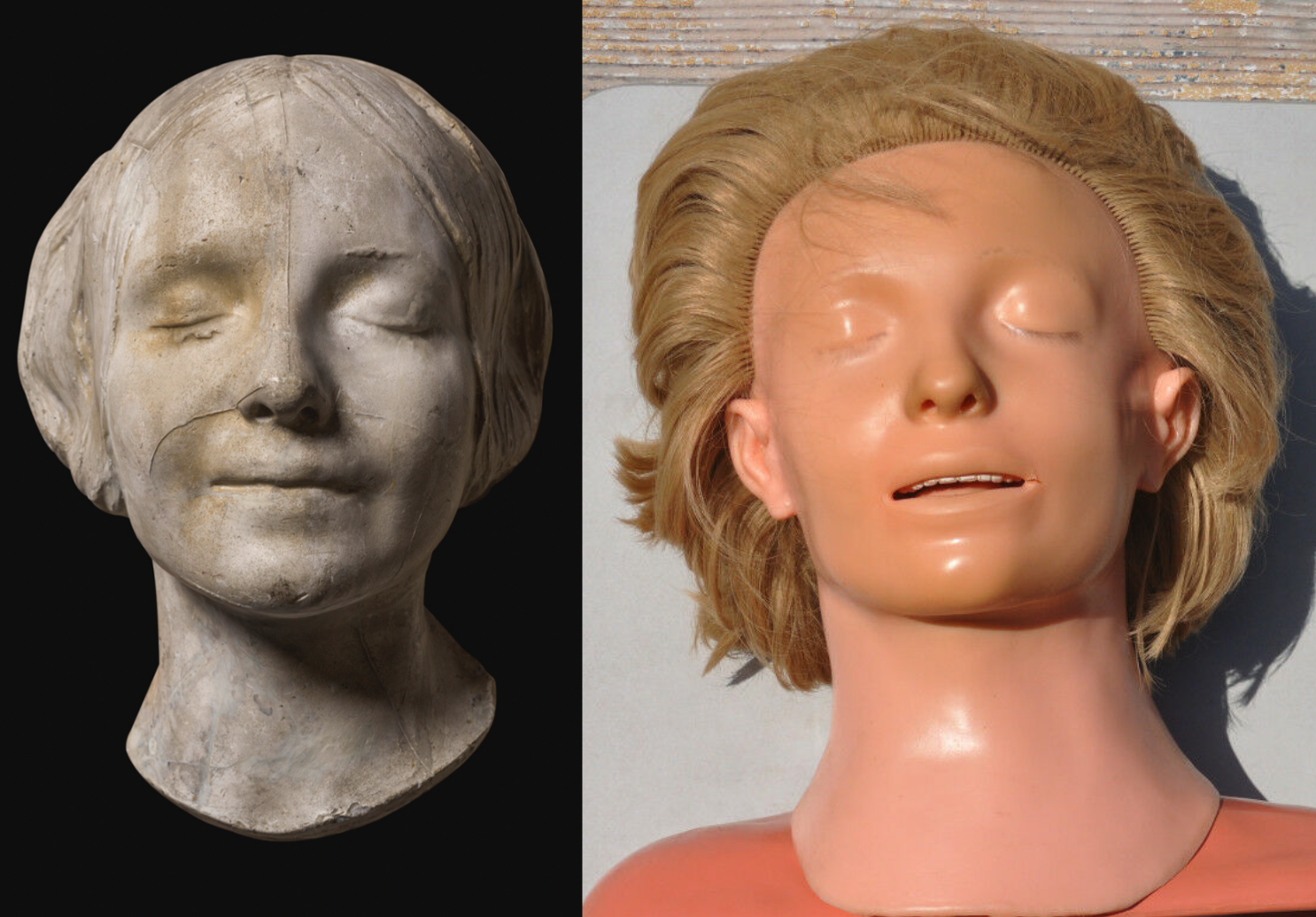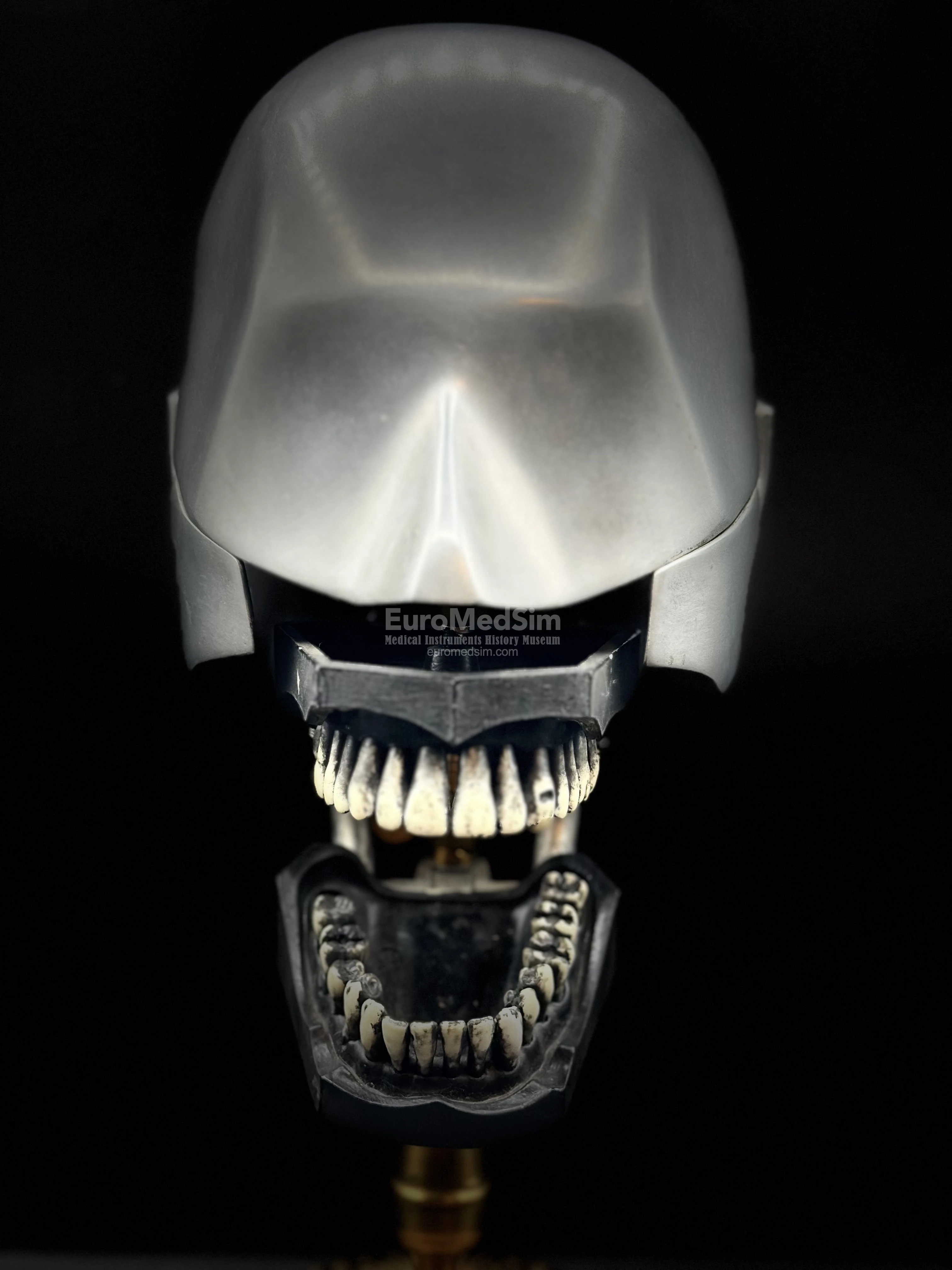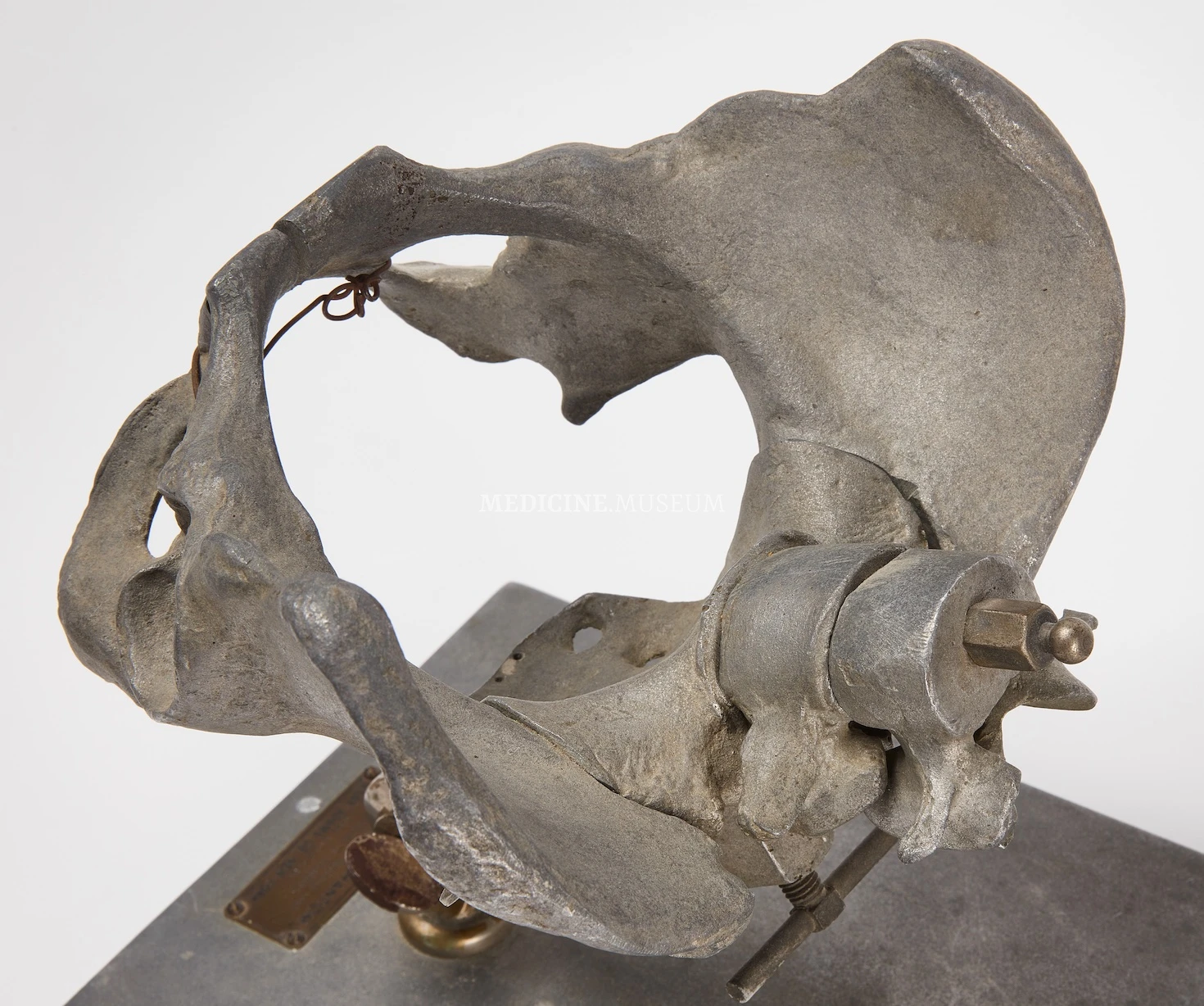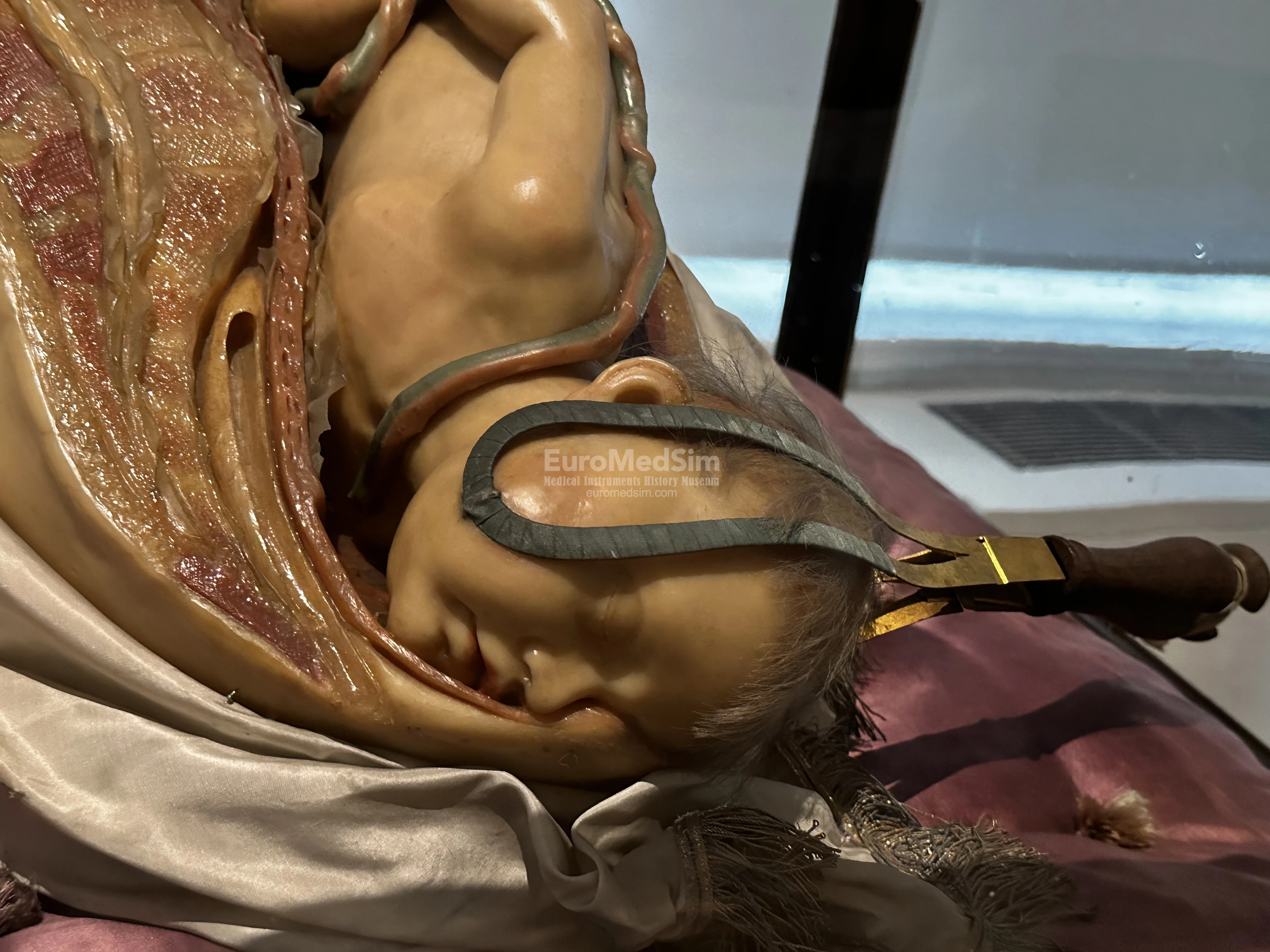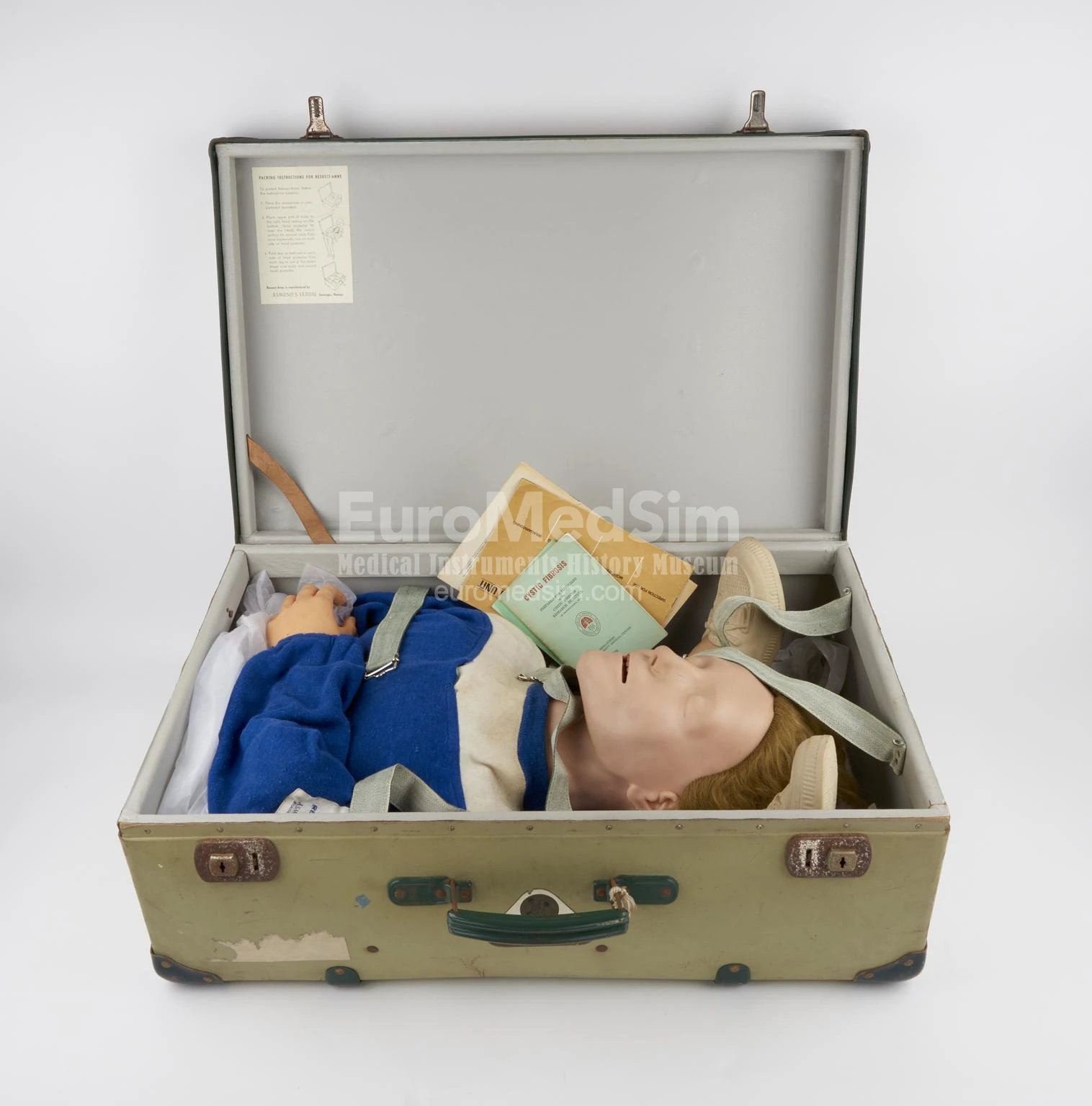Anatomic Anne, cardiac pulmonary resuscitation training manikin
Object description
The mannequin is a full-length model of a female torso with a realistic head, blonde hair, movable neck and an open chest exposing the respiratory organs. The design of the mannequin allowed to observe lung inflation during artificial ventilation training. Skin of the manikin is made of soft PVC, realistic skin color. The Anatomic Anne phantom is mounted on a grey board. As its sister product, Resusci Anne, for the purposes of the storage and transportation it fits into a light green-grey suitcase with bright green stiffening ribs and protective corner-caps, and is equipped with two lockable latches.
Anatomic Anne is a torso for the life saving education created by Åsmund Lærdal, Norwegian entrepreneur, at that time a toy-maker. The torso was designed to the training of the 'mouth-to-mouth' method of artificial respiration without any or with very few technical devices as well as thorax compressions. The methodology of mouth-to-mouth breathing was offered by American anaesthesiologist, Peter Safar. Almost simultaneously with the proposed technique of resuscitation by mouth-to-mouth breathing, the effectiveness of indirect cardiac massage by rhythmic strong compressions in the region of the sternum was proved. The Anatomic Anne is a sister-product, the globally known Resusci Anne presented by Laerdal in May 1960. For many decades Resusci Anne became the gold standard device for the life saving courses world-wide. As a prototype for casting the manikin faces of the both models, a famous and fashionable in those years image was chosen – the mask of L'inconnue de la Seine (The Unknown of Seine).
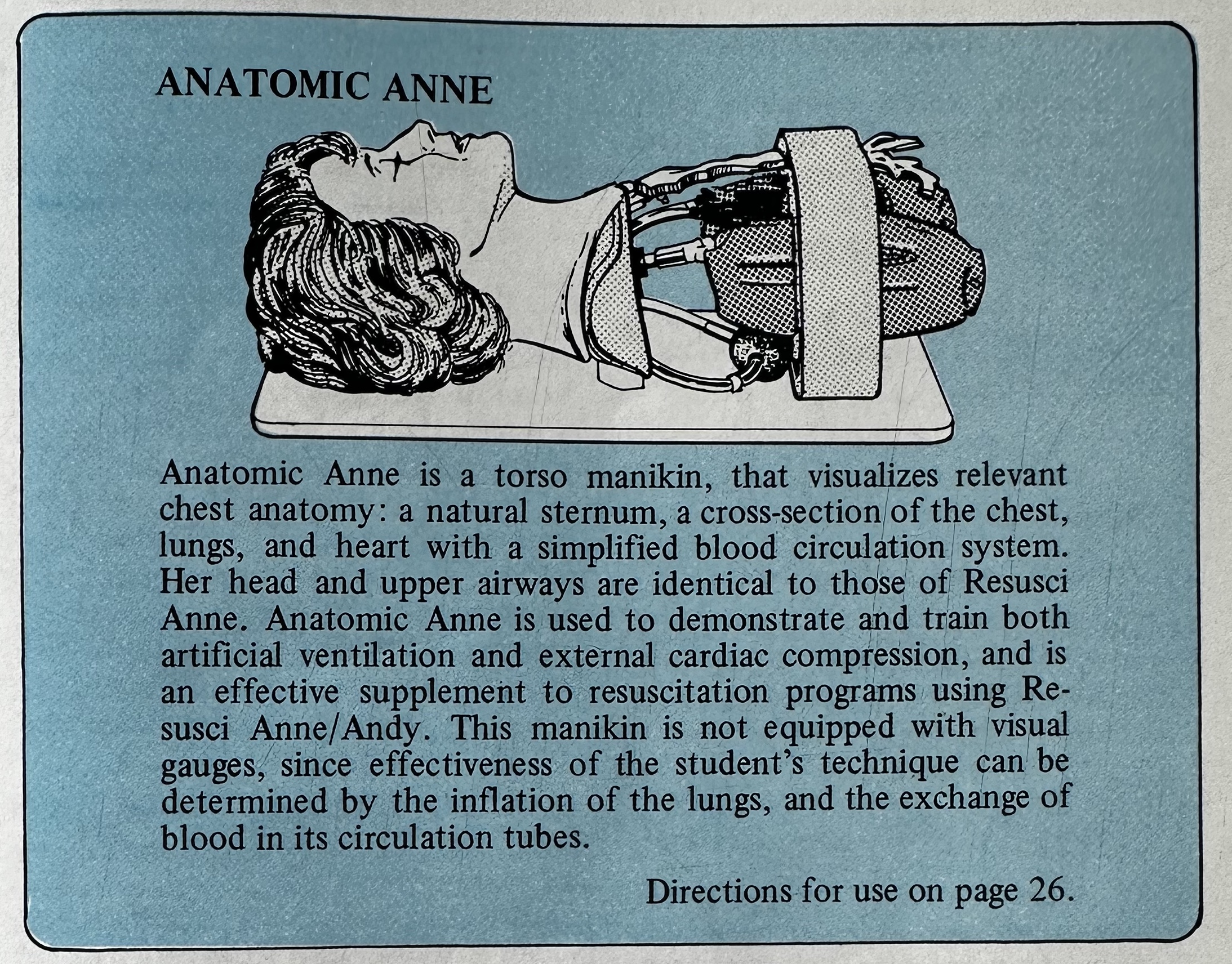
Here is a citation from the "Manual for Operation and Maintenance" for this product: "Anatomic Anne is a torso manikin, that visualizes relevant chest anatomy: a natural sternum, a cross-section of the chest, lungs, and heart with a simplified blood circulation system. Her head and upper airways are identical to those of Resusci Anne. Anatomic Anne is used to demonstrate and train both artificial ventilation and external cardiac compression, and is an effective supplement to resuscitation programs using Resusci Anne Andy. This manikin is not equipped with visual gauges, since effectiveness of the student's technique can be determined by the inflation of the lungs, and the exchange of blood in its circulation tubes."
Condition report
Overall in good condition, with signs of wear from time. The left corner of the dummy's mouth is torn.
Reference object
Resusci Anne, training manikin with inflator, Laerdal, Norway, ca. 1960-1985 in the Science Museum, London, UK
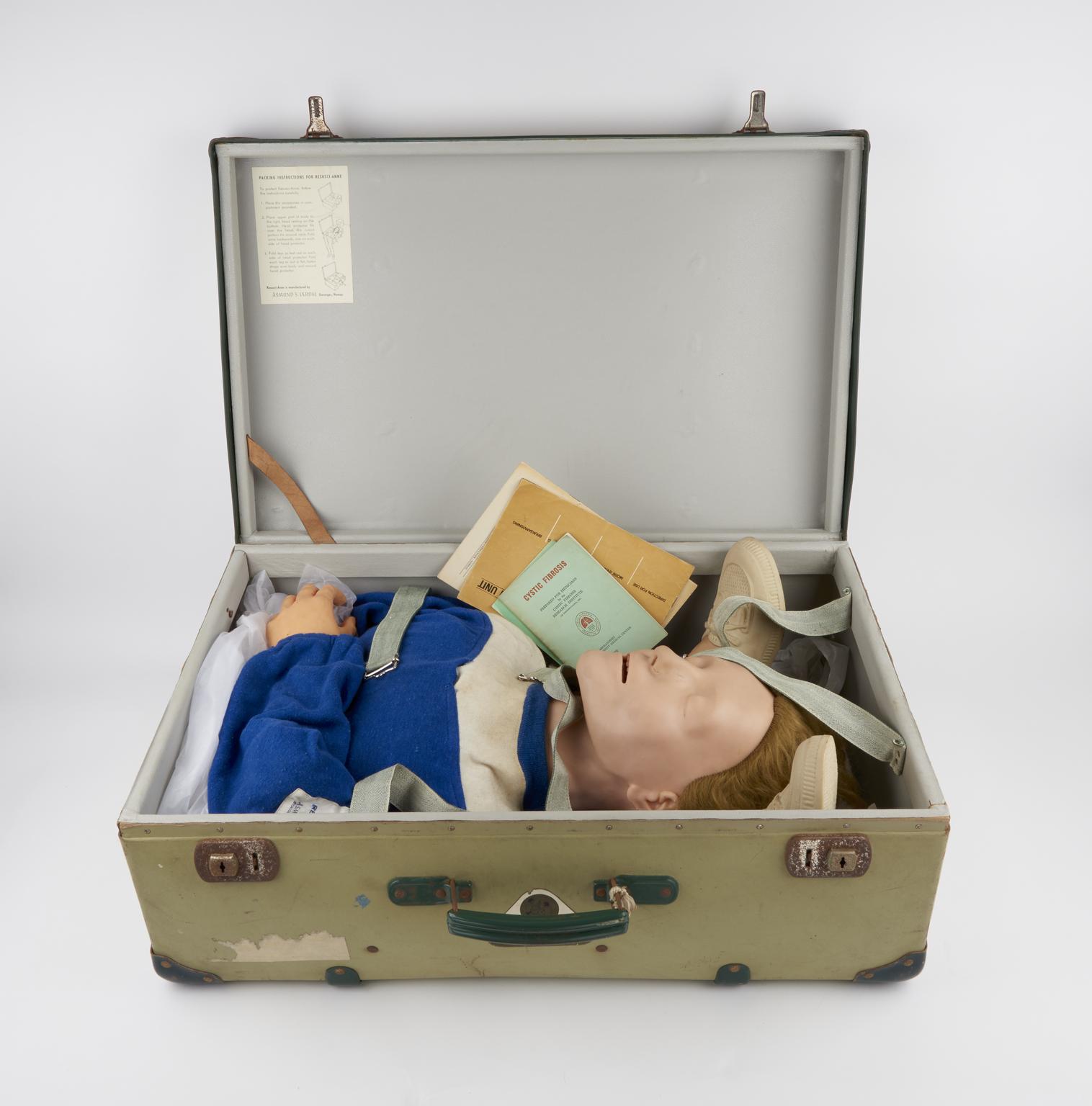
Provenance
Acquired in 2021 from the French antique shop.
